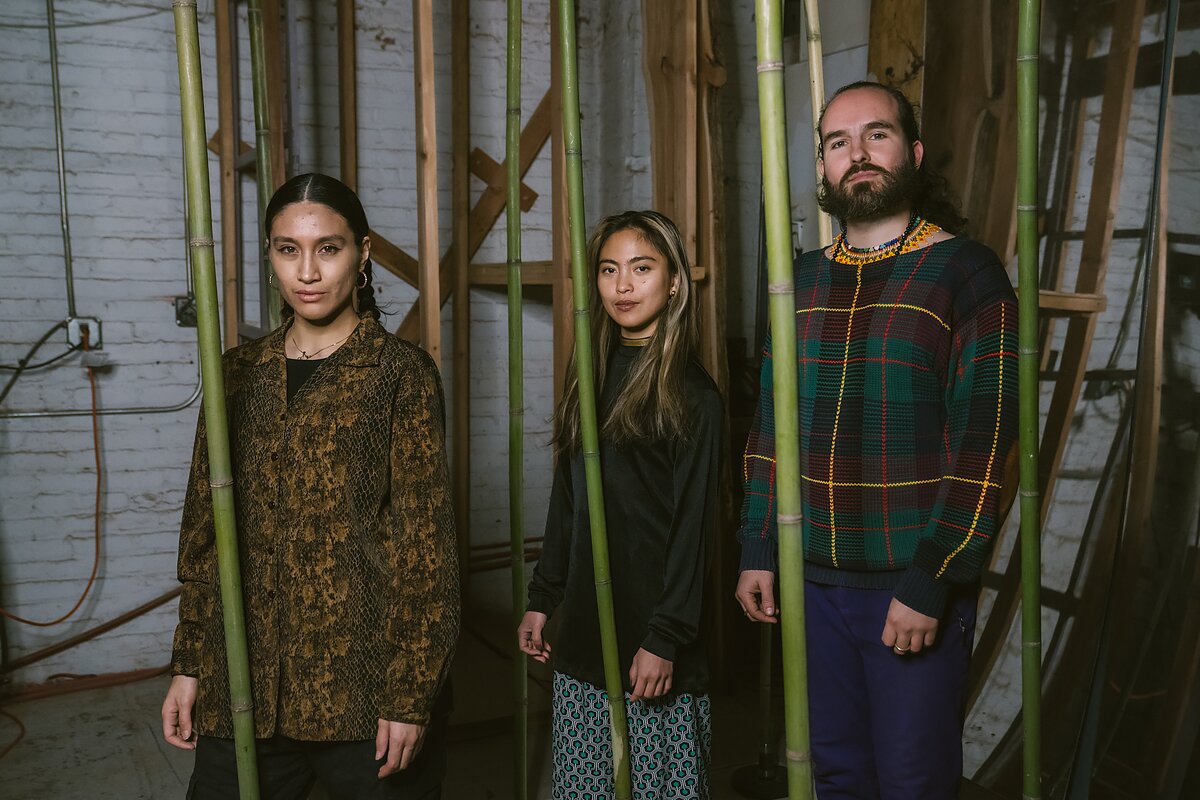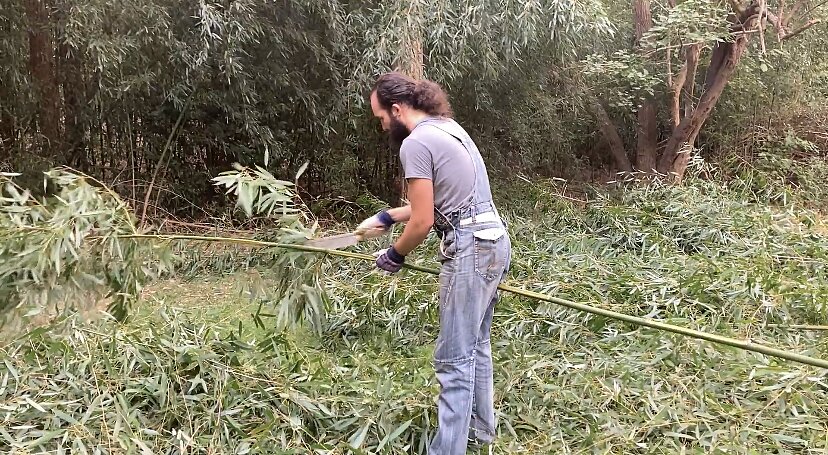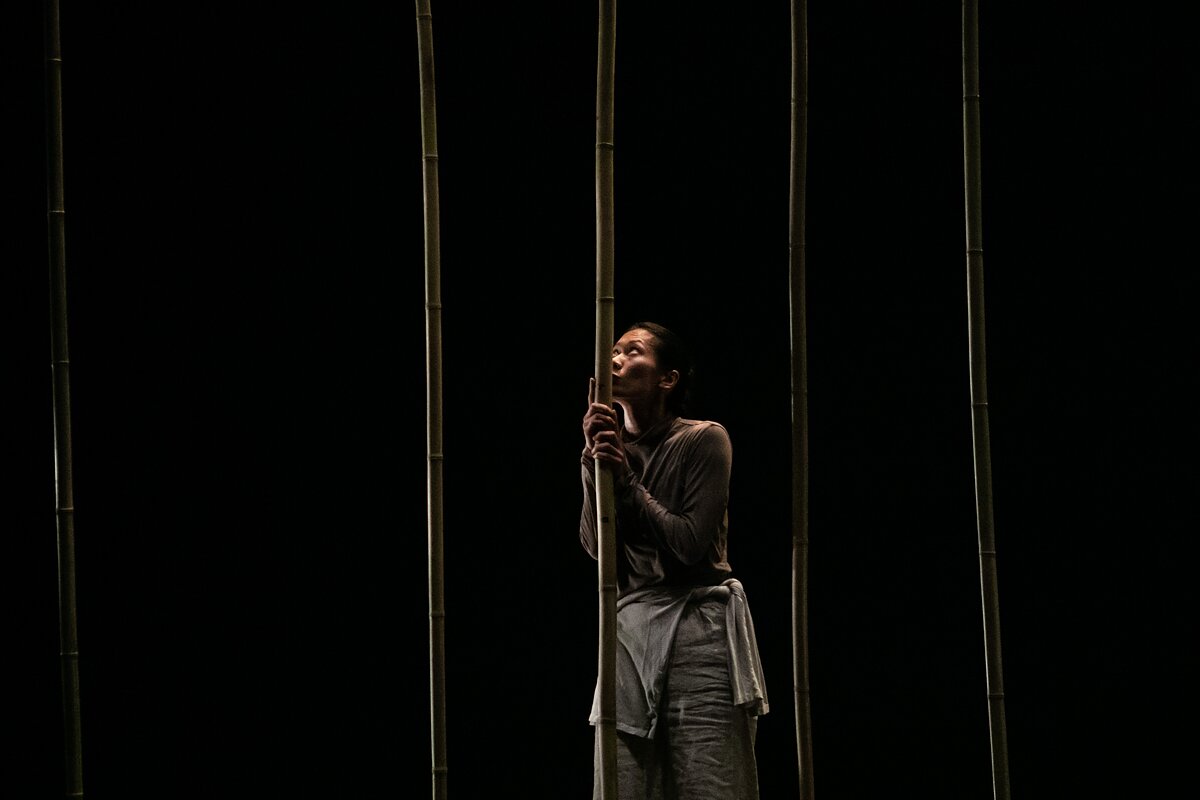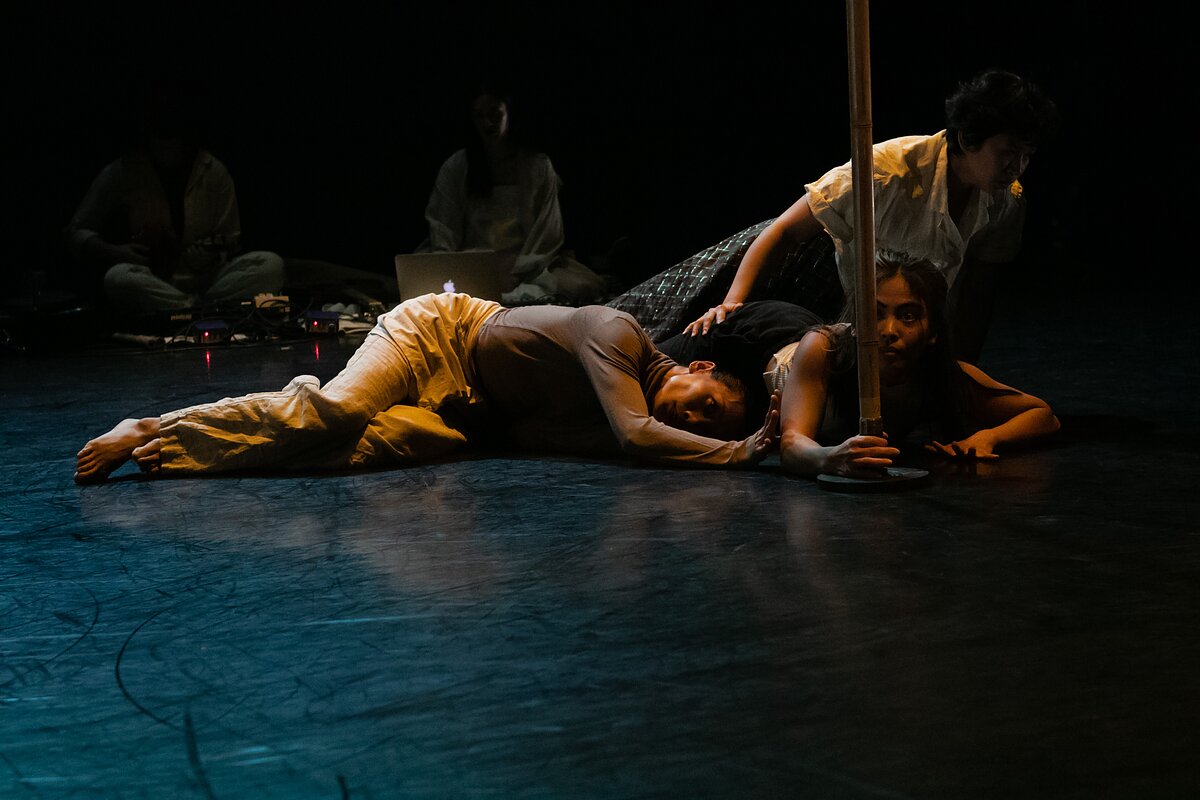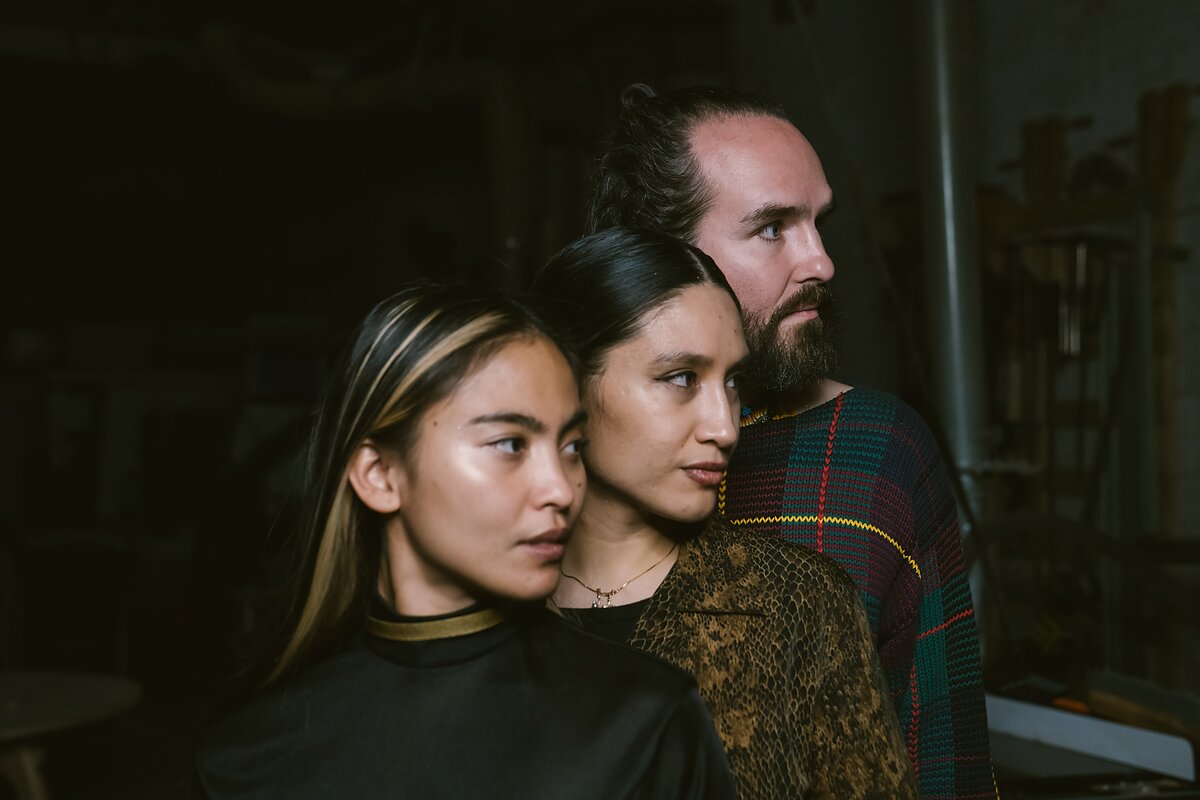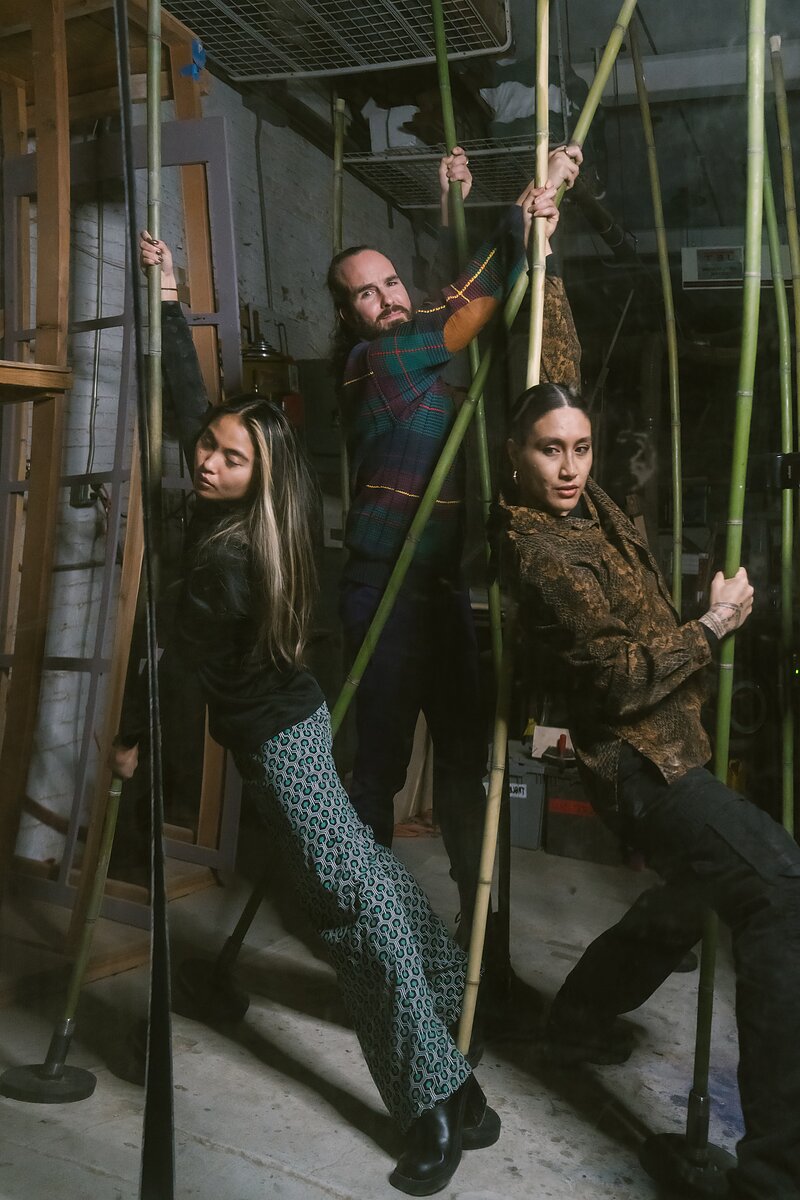In Community, Marie Lloyd Paspe and Almasphere Imagine “bumalik”
When I first saw Marie Lloyd Paspe, she was flying through the air in a Bill T Jones/Arnie Zane Dance Company piece. Even among such talented colleagues, she stood out; each of her movements had the smoothness and precision of a hot knife through butter.
The next time I saw her, she was upside down, draped over the back of dancer Ching-I Chang, and singing—rendering a Filipino lullaby in her powerful voice before darting playfully around the space. She was singing again in the next show I saw her in, wrapped in a microphone cable and then unraveled by co-choreographer and dancer Eric Parra. Paspe and Parra shared weight, scuffles, and care in a duet whose amiable mix of fighting for space and holding it for the other conveyed a friendship in a way I had rarely seen in dance work.
Each time I’ve seen Paspe, her presence has been unmissable. Her next major endeavor is a co-creation with installation artists/architects Sabrina Herbosa Reyes and Giovanni Antonio Rivera, who together form Almasphere. The work is also in collaboration with dancers Ching-I Chang and Paulina Meneses, and musicians treya lam and Sugar Vendil. The evening-length show, bumalik: sirkulo, has been brewing for a few years, and will premiere later this week at Greenspace in Long Island City on December 8th and 9th. I spoke with Paspe, Reyes, and Rivera as they worked in a Crown Heights woodshop to learn more about the story and process behind bumalik.
In 2021, Almasphere was working with the architectural form of the bahay kubo, an iconic stilt house indigenous to the Philippines. Out of traditional bamboo,—which they initially hand-harvested from a friend’s family’s yard in Long Island—they built a bare-bones house frame in four pieces, which they would then assemble in various parks as a host for pop-up art installations during the pandemic. For Reyes, whose family is from the Philippines, bamboo’s materiality was a repository of cultural memory. And moving the structure around the city itself recalled bayanihan, the Filipino practice of a community coming together to literally move a house.
Meanwhile, in 2021 Paspe had just begun seriously practicing pole dancing. When she saw images of the bahay kubo installation, with its sturdy bamboo poles, the seed of an idea came to her. “I texted Sabrina immediately,” she told me.
This seed was able to grow over a series of fellowships and residencies. Paspe received the prestigious Jadin Wong emerging choreographer’s fellowship from The Asian American Arts Alliance in 2022, which allowed the project to get off the ground; her 2023 Moving Artist Residency with Gallim provided time and space for the collaborators to work intensively on the piece.
Once combined with bamboo, pole dance also connected her to ancestral practices. Paspe’s family is from a municipality in the Philippines called Mataasnakahoy, or “high tree.” “I know I have climbers in my family,” she told me. While said with conviction, the statement was speculative; Paspe emphasized the way her knowledge of her own lineage has been cut off or restricted by diaspora and migration. But sometimes the body remembers what we forget.
“My body, my fascia is telling me I have this skill that is passed down,” she said, reflecting on the feeling of the movements of pole dancing and rock climbing.“I feel distant from my family in the Philippines—I don’t know my grandmothers, I don’t know my grandfathers. But what if I can meet them myself? Can I meet them through my body and through my fascia? I started to think of what I do and what manifests in my body…and imagine where it could come from.”
“We’re really lines of people, a lineage that is greater than just the body even though the body is the one connecting us,” she continued.
That practice of listening for ancestors through one’s own body is part of what Paspe calls “imagined memory”—and that imagining takes on a communal dimension in bumalik. Paspe’s experience of the fraught space of diaspora is not unusual. The legacy of US American colonialism in the Philippines means that labor-based migration is a familiar story to us Filipinos; on average, a whopping 10% of the GDP of the Philippines comes from overseas workers sending remittances back home (in 2022 it was 8.9%, according to the Bangko Sentral ng Pilipinas).
Reyes’s family left the Philippines during the US-backed Marcos dictatorship—another common reason for leaving. The cast of bumalik as a whole has experiences of diaspora and displacement, whether related to Taiwan, Puerto Rico, or the Philippines. While each member has a different story, their collective imagining produced striking overlaps and parallels—a fabulated vignette that mirrored another’s real family photo, for example. “Within our diasporic worlds there is a loss of story,” Paspe told me. “How can we come together to rebuild that together?”
Clearly, a different kind of magic emerged in the making-together; everyone involved in bumalik contributed significantly to the piece. And Paspe seems to have a special relationship with each of her collaborators—in many cases the collaboration goes both ways. Ching-I and Paspe’s performance at Abrons Art Center in May had a physical chemistry that sparkled with mutual care and mischievous play. In September, Sugar Vendil had Paspe as a fellow performer in her own work, an experimental sound and movement piece performed at Judson Church. And treya lam had Paspe as both a movement and vocal performer at their October show at Joe’s Pub.
On a rainy November evening, I arrived at a music rehearsal for bumalik at lam’s Brooklyn apartment. Activity abounded: Paspe was at the stove, stirring in carrots to the chicken adobo she was cooking for everyone; Vendil demonstrated the note-bending capacities of a new synth; lam made me tea. But when they were ready to begin playing together, Paspe paused to lead a few collective breaths, grounding everyone with a brief meditation.
A rich calm settled over the room. Like water’s surface going still, suddenly depth stretched downwards, darkly luminous. It was from this place that the music began, softly, with spare notes from Vendil’s electronic piano and lam’s warm guitar. “Free,” began Paspe’s first long note; lam and Vendil joined, adding harmonies that unfurled right at the edge of dissonance. There was the clinking of resilient bamboo, turned instrument as well as architecture. It conjured a forest that none of them had ever been to. But as Marie and her collaborators let their bodies sing, we were there: together, in our imagined memory.
